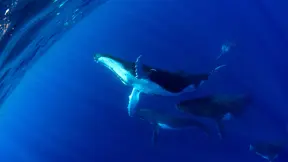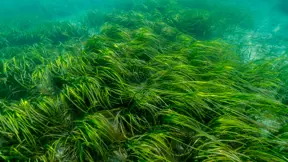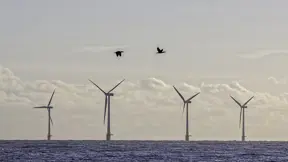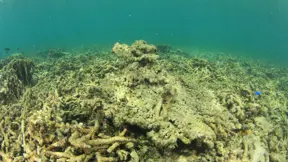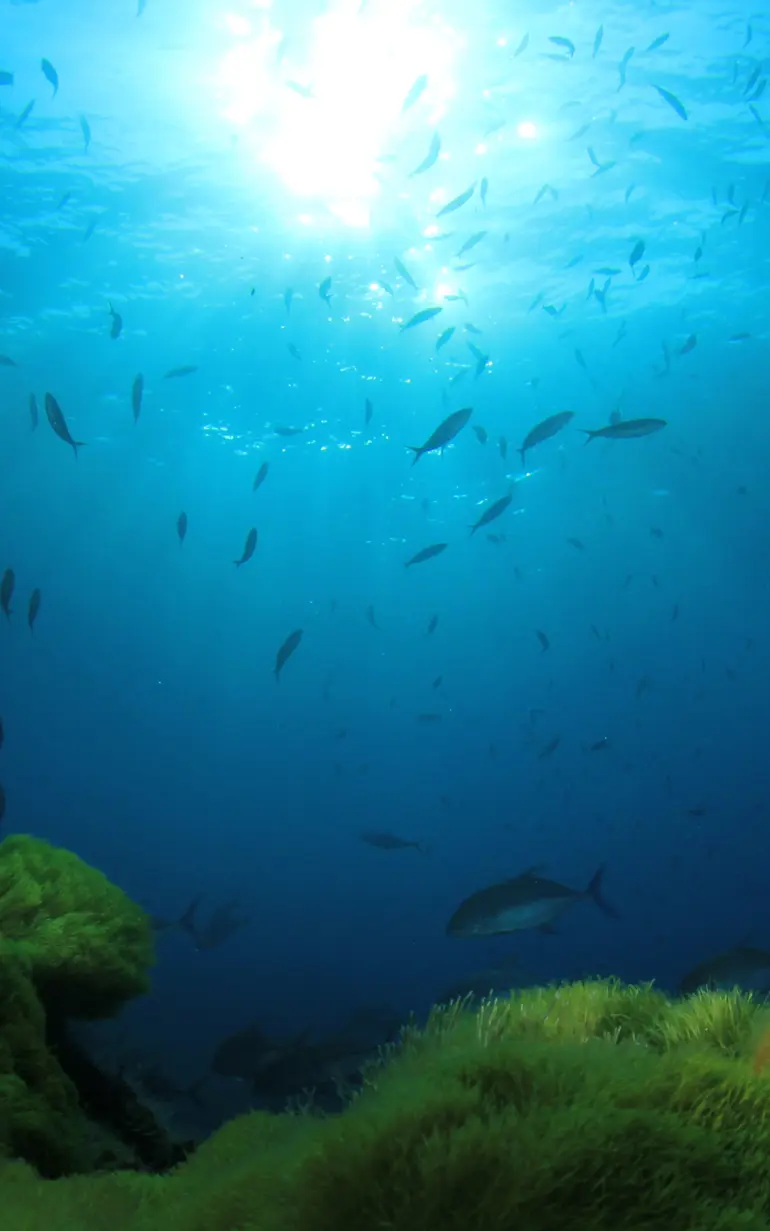

MIKE ECO Lab
Powerful ecological modelling made easy
MIKE ECO Lab is a versatile software tool that facilitates ecological modelling and environmental impact assessments across aquatic ecosystems. Tailored for simulating and analysing the intricate dynamics of marine, freshwater, and estuarine environments, it empowers users to model diverse ecological processes like nutrient cycling, primary production, and plankton dynamics. Leveraging advanced algorithms, MIKE ECO Lab accurately simulates the behavior and distribution of aquatic organisms, encompassing phytoplankton, zooplankton, fish, and benthic organisms
Rely on MIKE ECO Lab for a wide range of applications including environmental impact assessments, ecosystem management, water quality modeling, and fisheries management. Its user-friendly interface and powerful modelling capabilities, enables scientists, environmental consultants, and decision-makers to assess the impact of human activities, climate change, and pollution on aquatic ecosystems, and to develop sustainable management strategies.
Interested in MIKE ECO Lab?
Contact usHow does MIKE ECO Lab help?
No in-house modellers?
Get our expert modellers on board for your consulting projects either as a partner, to provide extended user support or for model and project reviews. Submit an inquiry
Areas of application

Aquaculture planning and design
Optimise aquaculture by modelling nutrient impacts on dissolved oxygen to enhance aquatic health and productivity.

Contaminant fate and transport
Simulate the transport and degradation of contaminants to ensure safe water levels.

CSO/SSO overflow mitigation
Analyse the impact of overflows on water quality, visualising bacteria and pollutant dispersal.

Ecological restoration projects
Enhance restoration projects with ecological process and habitat condition modelling.

Environmental Impact Assessments
Assess ecological impacts of urban development, including hydrogen sulphide and green infrastructure effects.

Eutrophication mitigation strategies
Investigate nutrient dynamics and algal blooms to develop effective nutrient management strategies.

Flood impact assessments
Model ecological impacts of flooding on water quality and habitats to improve management.

Forecasting and early warning systems
Predict environmental changes and issue early warnings to safeguard recreational waters.

Green infrastructure & nature-based solutions
Model ecological benefits of urban green infrastructure to improve environmental and recreational quality.

Groundwater protection zone modelling
Model contaminant transport in aquifers to support groundwater protection.

Groundwater remediation strategies
Simulate contaminant behavior in groundwater for effective remediation solutions.

Habitat response assessments
Assess habitat changes under environmental stress to aid ecosystem conservation and management.

Integrated water resources management
Advance IWRM with multi-dimensional water quality modelling for complex watersheds.

Mine water management planning
Model impacts of mine water discharges to develop mitigation strategies for surrounding environments.

Offshore planning, design, and construction
Evaluate environmental impacts of offshore developments, including oil spill effects

Oil spill modelling & emergency response
Integrate ecological and oil spill modelling to predict and manage oil spill impacts.

Optimisation of dredging operations
Model sediment and contaminant dispersal during dredging to mitigate ecological impacts.

Water quality assessments
Analyse impacts of pollutants on water systems, ensuring water safety and ecological health.
Additional capabilities & unique features
Explore our latest support resources, including guides, videos, and FAQs in our Knowledge Base.
New and improved MIKE ECO Lab template creation workflows
With the MIKE ECO Lab graphical user interface, you can easily make new templates by dragging and dropping components. You can then export model components to establish a versatile library of building blocks for crafting additional templates. Enhance your capabilities by incorporating the new 3-way coupling feature, which allows for the modelling of complex feedback loops involving hydrodynamics and heat transport. Experience improved usability with the upgraded MIKE ECO Lab plug-in interface, and take advantage of expanded Oil Spill templates now available on Linux.
Experience faster MIKE ECO Lab simulation speed
With the release of MIKE 2023, MIKE ECO Lab has been equipped with MPI parallelisation for enhanced performance when calculating ‘distance to shore’ and ‘direction to shore’.
Improved handling of dry elements in MIKE 21/3 FM
Execute MIKE ECO Lab calculations in both traditional ‘wet’ elements as well as dry elements for fixed (not transported) state variables. Describe the flood and dry state of an element as a new built-in forcing.
Dynamic removal of unused expressions to improve performance of MIKE 21/3 FM
Save computational time by ‘replacing’ unused equations with a constant value before the simulation run.
Particle spawning from standard MIKE ECO Lab expressions in MIKE 21/3 FM
Create new particles from normal, standard MIKE ECO Lab expressions instead of relying on other particles to dynamically create or spawn new particles.
New pseudo-random number generator
Ensure each particle produces the same, individual sequence of random numbers using the new pseudo-random number generator (PRNG). Reproduce particle movement, source locations and behavior, independent of the number of parallel cores/domains, on different hardware.
Access new tools, Cloud applications and an enhanced graphical overview from the redesigned MIKE Zero start page
MIKE Zero, DHI’s fully Windows integrated graphical user interface, is now better than ever! Enjoy easy access to new MIKE Cloud applications and Cloud-enhanced functionality, plus an extended set of MIKE tools within theme-based (rather than product-based) interactive workflows. Ensure important model components such as sources and structures stay at the forefront with a new interactive, customisable floating mapping window. Lastly, the updated tabbing functionality will help you work in a more organised and efficient manner.
Available on Azure Marketplace
You can now access MIKE ECO Lab on Azure Marketplace, where you can start modelling in the cloud with no hardware limitation in four simple steps. Learn more
Efficiently formulate new ecological models customised to your local ecosystem
Test different scientific ecosystem theories/ hypotheses to understand and map the causal relations in a specific ecosystem. Assess the current environmental situation when used as a surveillance tool.
Safeguard the public health of recreational swimmers
Describe the fate and transport of Feacal Indicator Bacteria (FIB) – E. coli and enterococci and forecast bathing water quality.
Help protect public safety from potential flood risks
Manage disease risks from flooding events. Calculate flood risk indices or scour risk formulas.
Model the behavior of organisms in response to the environment`
By coupling the add-on module, ABM Lab, you can truly unlock the power of MIKE ECO Lab, and start building agent-based (Lagrangian) models of e.g. fish or coral larvae transport.
Determine concentrations of heavy metals in water bodies
Describe adsorption/desorption of metals to suspended matter. Describe the sedimentation of sorbed metals to the seabed as well as resuspension of settled metals.
Investigate the safety of benthic habitats
Describe concentrations of phytoplankton, chlorophyll-a, zooplankton, organic matter (detritus), organic and inorganic nutrients, oxygen and area-based biomass of benthic vegetation over time. Describe degradation of organic matter, resulting oxygen conditions and excess levels of nutrients in water bodies.
Optimise aquaculture production
Benefit from significant enhancements to the MIKE Zero Data Extraction FM Tool
The tool now delivers improved performance through OpenMP parallelisation, enabling faster processing. Input data files can be easily viewed and validated, while output file selection has been streamlined to align with MIKE 21/3 input editors. Bathymetry can now be displayed in Geographical View, enhancing spatial understanding. Users can save 2D and 3D structured overlays as DFSU files across all modules (HD, TR, ST, MT, EL, PT), and horizontal plane outputs are now available for '3D' field types in all modules.
Let's get started
Learn how your project can benefit from the gold-standard in ecological modelling.
You may also like
How can we help?
With our global network of offices, we make sure you get the right answers to your local needs. Let us know what you're interested in (e.g., product features, trial license, pricing, etc.) and we will get back to you.
